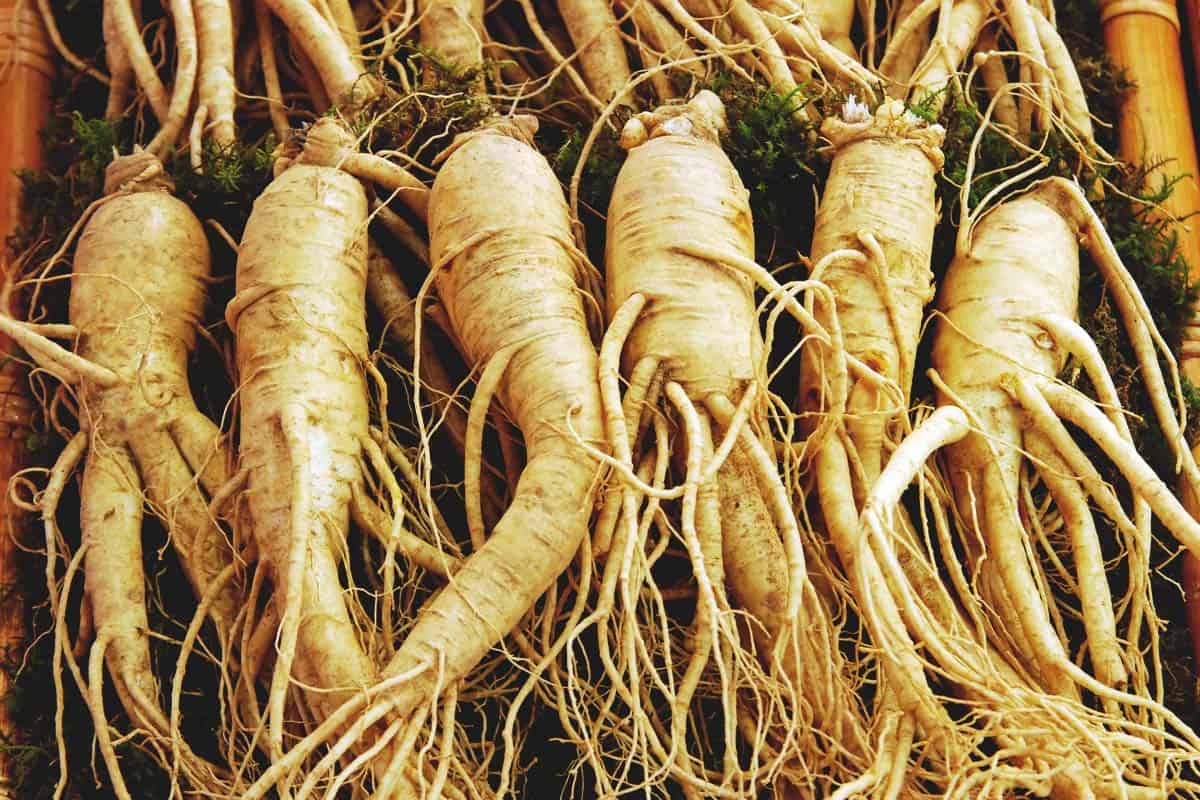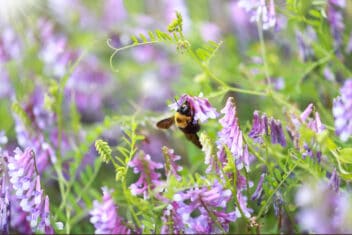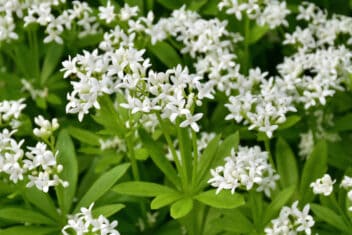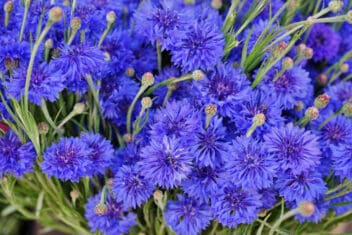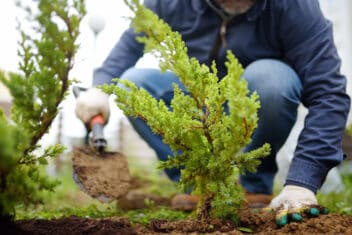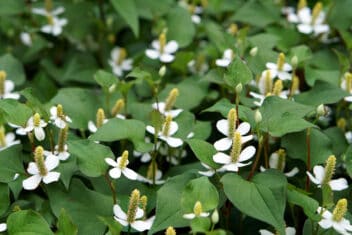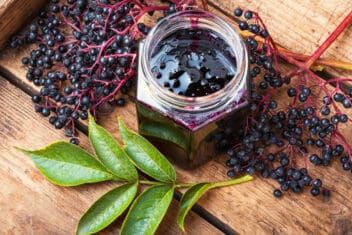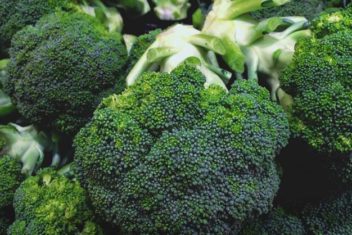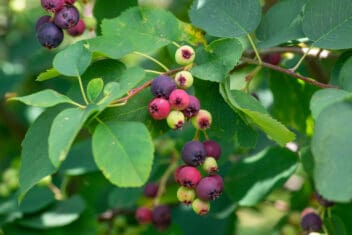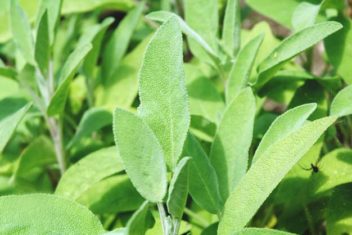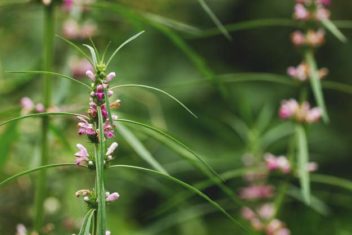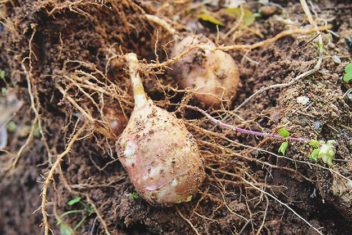A classic herbal remedy, ginseng has been valued and cultivated for centuries. Whether you are familiar with American ginseng (Panax quinquefolius) or Oriental ginseng (Panax ginseng), both have been used extensively as muscle relaxers, diabetes treatments, and even aphrodisiacs!
Most people, myself included, already know this. It’s also common knowledge that harvesting wild ginseng is heavily regulated since ginseng fetches hundreds of dollars per pound.
But what a lot of people don’t know is that it’s actually quite easy to grow your own ginseng at home. If you have access to a woodland environment with moist, fertile soil, then growing ginseng is within the realm of possibility.
Here’s how to do it.
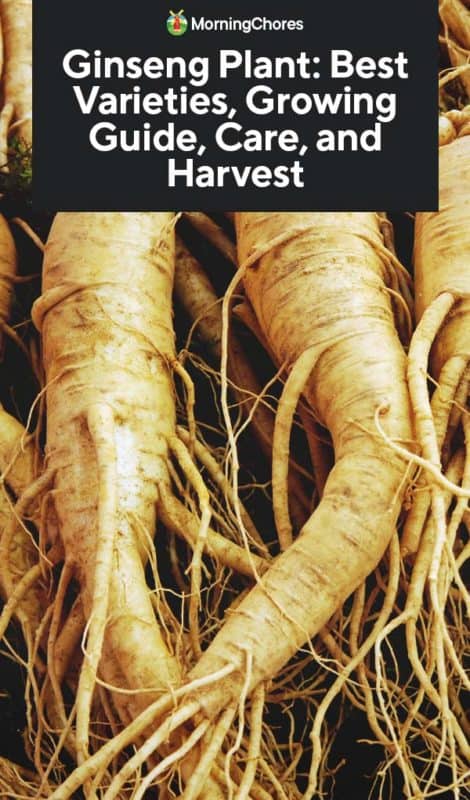
Ginseng Varieties
There are two main types of “true” ginseng, American and Oriental. However, several alternative types have emerged as well. Although they are not members of the Panax family and therefore not “true” ginseng, these plants sport some of the same health benefits.
American ginseng
American ginseng is native to North America, particularly the Appalachian mountains. It grows wild in forested areas and has a mild, cooling effect. It is best used as a calming tonic. If you are planning on growing ginseng, this is probably the variety you will go with since it’s the easiest to come by.
Oriental ginseng
Oriental Ginseng is a close cousin to American Ginseng and is native to Siberia, Korea, and China. Also referred to as red ginseng, true ginseng, and Asian ginseng, this ginseng has more of a “hot” flavor and is used as a stimulant. It is nearly extinct in the wild.
Indian ginseng
Indian ginseng is not a member of the Panax family – it’s scientific name is Withania somnifera. However, it sports some of the same anti-inflammatory and antioxidant properties. It’s also referred to as winter cherry.
Siberian ginseng
Siberian ginseng is often marketed as ginseng, although again, it’s not a member of the Panax family. Known scientifically as Eleutherococcus senticosus, this plant is sometimes just referred to as eleuthero. It is used to relieve stress and is also a stimulant.
Brazilian ginseng
Brazilian ginseng, or Pfaffia paniculata, is also not a true ginseng. However, it is believed to have some of the same aphrodisiac properties.
Planting Ginseng
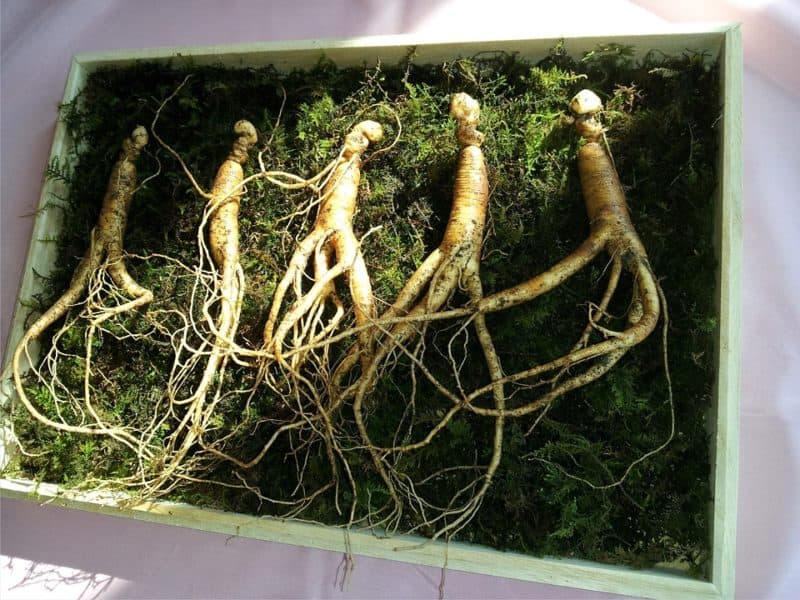
1. When and Where to Plant
You can grow American ginseng anywhere from zone 3-7 (or even zone 8 in some places). The best time to plant ginseng is in the fall. It takes up to 18 months just for the seeds to germinate, so you’ll need to have plenty of patience as you are first getting started.
Select a site that is sloping, with about 80% shade. You will need to plant your ginseng (either in seed or seedling form) where competition from other plants is low and the plants are unlikely to be disturbed by foot traffic.
Some people choose to plant ginseng in raised beds covered with netting. Ginseng can be successfully grown outside of a bed, so the choice is up to you. Ginseng plants do well in moist conditions but otherwise, requires little else to develop. The plants require neutral soil but do better in soil that veers toward alkaline rather than acidic. You may have to adjust a bit with lime prior to planting.
The main thing to pay attention to is the temperature. Ginseng does not love the heat. If you live in a warmer climate, make sure you choose a shadier area to plant it in – or plant in a container – to help keep it cool.
A good rule of thumb is to plant ginseng where there are plenty of hardwood trees growing, like beech, maple, walnut, oak, or hickory. The thicker the canopy is, the better – this will cut down on understory weeds that compete with ginseng. Good drainage is also essential.
2. Planting Ginseng in the Ground
If you plan on growing ginseng directly in the ground (or in raised beds), keep in mind that you may need to stratify the seeds first. You can purchase seeds that are already stratified – these are frequently sold by reputable dealers. If your seeds are not stratified, do this before planting by storing them in shallow sand in refrigerated conditions for at least six months.
You can also purchase roots, which is easier and saves you the 18 months of waiting for the seeds to germinate, but it can be cost-prohibitive. Roots must be kept whole and planted before they begin to bud in the spring.
Sow your seeds in late fall, planting at a depth of 1½ inch. The best time to plant is after rain or snow when the ground is moist. Space your seeds at least 14 inches apart and make sure there are at least two inches of soil before you hit a layer of rock.
The planting hole should be about ¼ inch deep. Press the seed into the hole, then cover by pressing the soil firmly and adding three inches of leaf matter over the plant area. This requires no tilling, which can help with drainage.
If you are planting roots, they should be planted under three inches of soil. These should be planted in the early spring instead of the fall. All other planting recommendations apply, but you won’t need to wait as long for the plant to set berries, of course.
3. Planting Ginseng in a Container
Ginseng may also be cultivated indoors using containers with excellent drainage. Just make sure the containers stay away from bright sunlight.
Otherwise, the wild-simulated method will be your best guide as to how to cultivate ginseng indoors. You can place the pots on a patio or deck when the outdoor conditions are favorable, planting the seeds in the fall. You will cover them with an inch of decaying leaves after planting.
Avoid planting ginseng seeds in clay pots. Clay absorbs moisture and dries out more quickly than plastic. Make sure the pots are stored in a shady area – otherwise, all other steps involved in growing ginseng in a container are identical to those when you are growing ginseng outdoors.
Caring for Ginseng
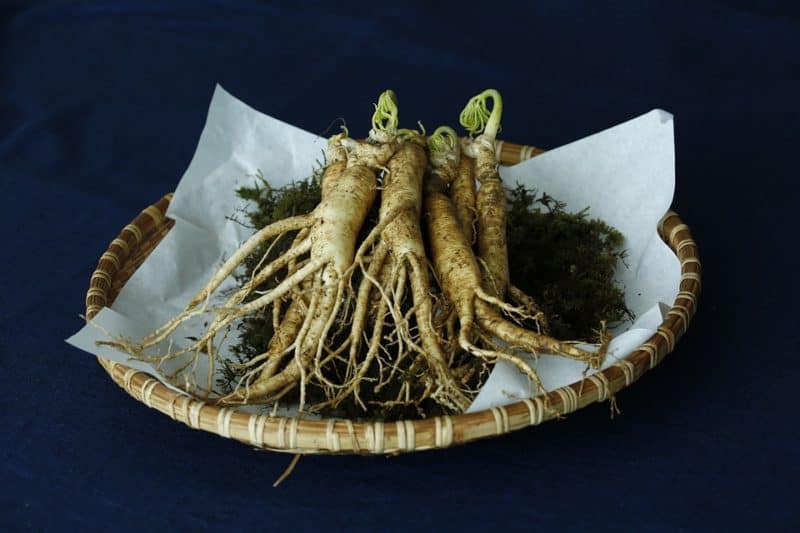
Now the hard part – you have to wait. Even if you’ve already invested 18 months just waiting for your seeds to germinate, now you are going to have to wait a few more years in order to be able to harvest your ginseng. Growing ginseng is truly a waiting game.
The seeds of the plant will not germinate until the year after planting. You do not need to fertilize the plant, nor do you need to mulch or do much else to care for it. It is truly a “set and forget” kind of plant. However, you may need to water outdoor-grown ginseng when conditions are particularly dry.
After the seeds have germinated (usually a couple of years after they were planted), you will notice that the ginseng plant flowers and produces red berries. You can harvest seeds to save for later from these berries, but you should not harvest the rest of the plant quite yet – it has not matured. It will only reach maturity after five to ten years.
Problems with Growing Ginseng
Ginseng has very few problems to speak of – just the fact that it takes so long to mature! You should periodically check your crop for fungus or pest problems, but otherwise, you should just let the plants grow.
Ginseng berries are a favorite treat of slugs. Since you are growing ginseng in a relatively moist environment, you will need to watch out for slugs and manually remove them if you find them.
One of the biggest threats to your ginseng plants that you likely haven’t thought of is the issue of human pests. Ginseng is commonly poached by other harvesters who are interested in selling the high-value crop for themselves.
The berries are bright red and visible, attracting people who might want to profit from all of your hard work. Many growers remove berries and seeds as soon as they ripen in order to avoid detection. This can also prevent animals from munching on the berries, too.
The only other problem to watch out for is damping-off. This is a relatively common ginseng disease and usually affects plants under two years old. It causes leaf discoloration and eventual death to the plant. Make sure your soil has adequate drainage and avoid low-lying areas when you plant.
Best Companion Plants for Ginseng
Ginseng doesn’t necessarily benefit from being grown close to other plants. In fact, it is best grown by itself. However, there are some plants that indicate proper soil conditions for growing ginseng. These are as follows:
- Trillium
- Blue or black cohosh
- Jack-in-the-pulpit
- Goldenseal
- Wild yam
- Solomon’s seal
- MaidenHair Fern
- Baneberry
Harvesting & Storing Ginseng
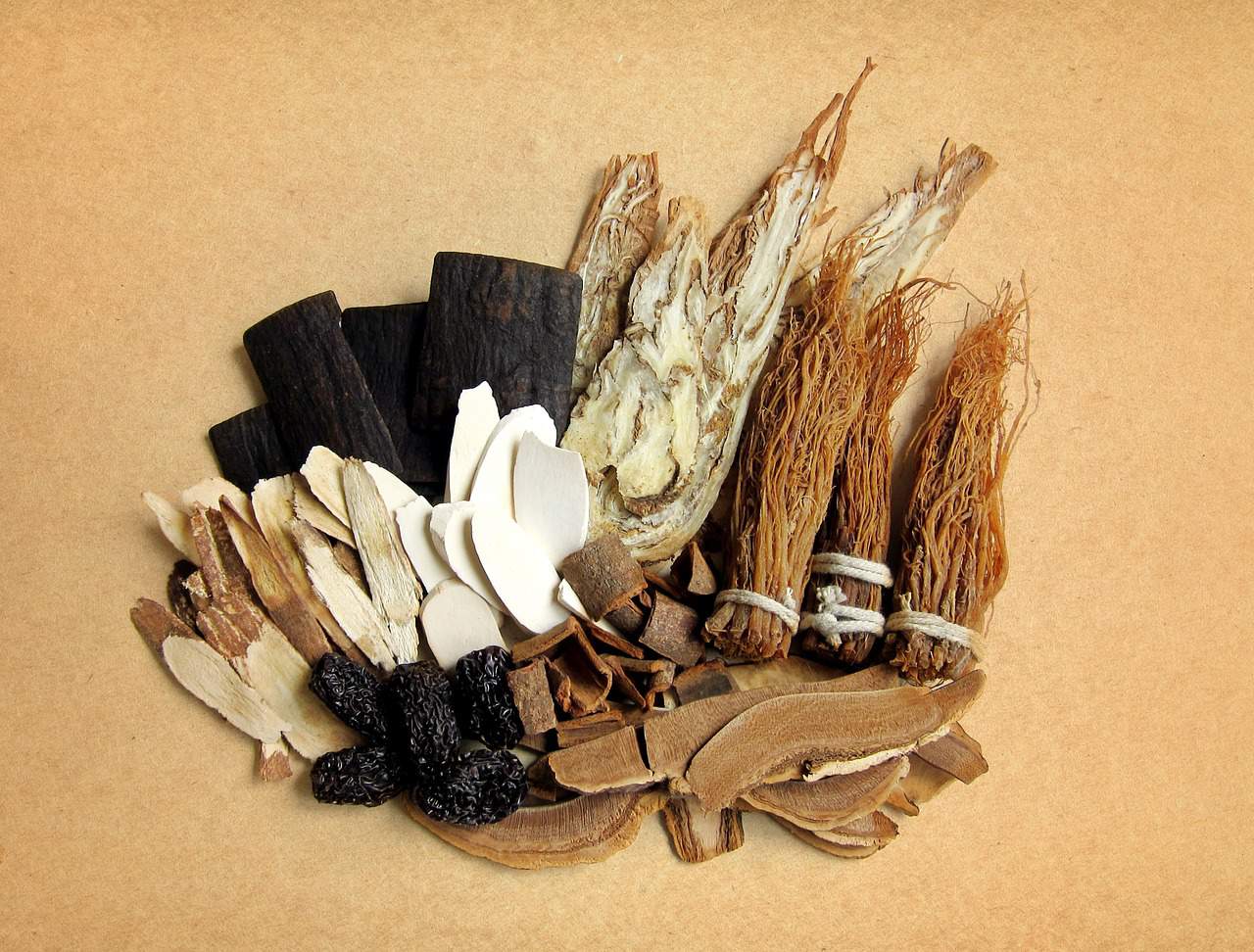
Ginseng takes a minimum of five years to reach maturity. This is the main reason why it fetches such high prices – there is a lot of time involved in waiting for ginseng to mature.
However, when it is finally mature, it can be harvested in the fall. Make sure the plant has developed three or more prongs, which indicate the ginseng’s maturity. Many people believe that the prongs indicate age, but that’s not the case – two plants of the exact same age could have differing prong quantities.
Dig carefully around the roots to avoid damage. I recommend using a pitchfork to do this. Dig out around the plant – about six inches away – and pray under the plant to shake it loose. After removing them, wash and dry them. Don’t scrub too vigorously or you will remove some of the medicinal chemicals in the root hairs.
Once the roots are harvested, you can dry them in a dehydrator or by hanging them for several weeks. They can then be sliced or grated into containers to be used for future use, or stored whole.
Ginseng can be chewed raw or it can be used fresh in soups, stir-fries, teas, and medicinal treatments. I recommend consulting a doctor for the recommended dosage if you plan on using it for medical reasons – it’s always important to get a medical opinion before using a non-traditional curative!
